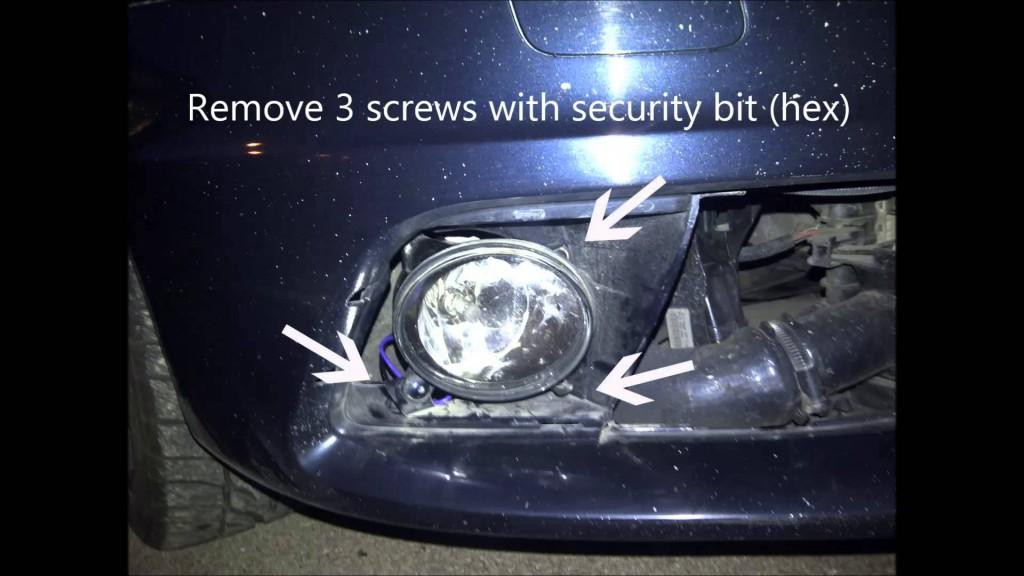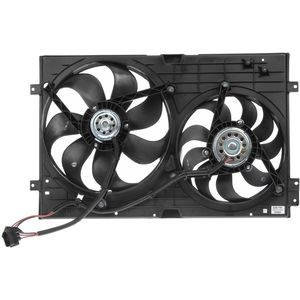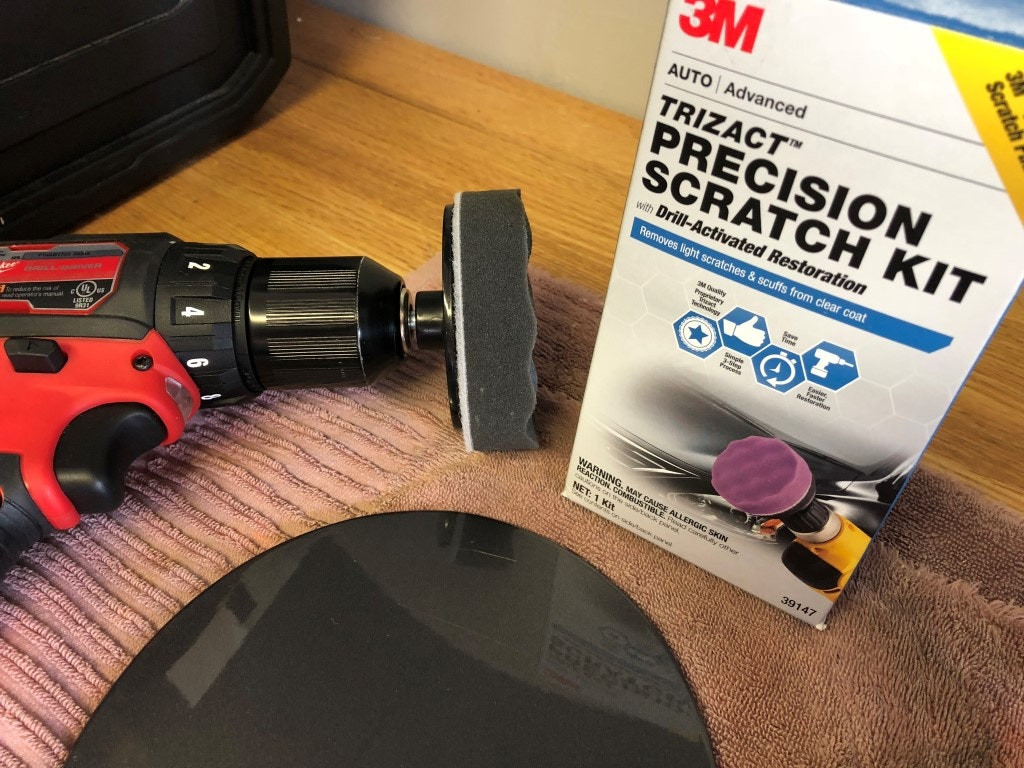Can You Fix A Dent In A Car: Comprehensive Guide
Can you fix a dent in a car yourself? CARDIAGTECH.NET offers expert insights and solutions for car dent repairs, whether you’re tackling minor dings or seeking professional assistance. Discover the best methods, tools, and advice to restore your vehicle’s appearance and value, enhancing your auto body repair skills and maintaining your car’s aesthetic appeal.
1. Understanding Car Dents and Their Causes
Dents are an unfortunate reality for car owners. Even the most cautious drivers can fall victim to unexpected incidents that leave their vehicles marred with unsightly blemishes. Understanding the common causes of these dents is the first step in preventing them and knowing how to address them effectively.
- Hail Damage: Hailstorms can unleash a barrage of ice stones that pummel car surfaces, leaving behind a constellation of small dents across the hood, roof, and trunk. The severity of the damage depends on the size and density of the hail.
- Parking Lot Mishaps: Tight parking spaces often lead to accidental door dings as drivers and passengers carelessly swing their doors open, impacting neighboring vehicles. Shopping carts, left unattended, can also roll into cars, causing scratches and dents.
- Road Debris: Gravel, rocks, and other debris kicked up by passing vehicles can strike your car’s body, resulting in small but noticeable dents. Construction zones and unpaved roads are particularly hazardous in this regard.
- Minor Collisions: Even low-speed collisions with other vehicles or stationary objects can cause dents, especially to bumpers and fenders. These types of accidents are common in urban environments with heavy traffic.
- Vandalism: Sadly, intentional damage to vehicles is a reality. Vandals may kick, punch, or otherwise strike car panels, leaving behind dents and scratches.
Recognizing these common causes allows car owners to take proactive measures to minimize the risk of dents and prepare for necessary repairs. CARDIAGTECH.NET provides a range of dent repair tools and solutions to help you address these issues promptly and effectively.
2. Types of Car Dents and How to Identify Them
Not all dents are created equal. The type of dent, its size, location, and severity will influence the repair method and the level of expertise required. Identifying the specific type of dent is crucial for choosing the most appropriate repair strategy.
| Type of Dent | Description | Removal Complexity | Best Approach |
|---|---|---|---|
| Ding | A small, shallow indentation typically caused by a minor impact. | Simple | Often repairable with DIY methods like suction cups or specialized ding removal tools available at CARDIAGTECH.NET. |
| Round Dent | A circular indentation with a smooth, curved surface. | Moderate | May be “popped” back out using heat and specialized tools, but professional intervention might be needed for larger dents. |
| Sharp Dent | A small but deep indentation with a defined, angular shape. | Challenging | Requires careful manipulation and specialized tools to avoid further damage. Professional repair is often recommended. |
| Crease Dent | A long, linear indentation with a visible crease or fold in the metal. Paint damage is common. | Complex | Requires skilled metalworking and paint repair techniques. Professional repair is highly recommended. |
| Serious Dent | A large, deep indentation that may involve structural damage to the vehicle’s frame or underlying components. | Very Complex | Requires extensive bodywork and possibly frame straightening. Professional repair at an auto body shop is essential. |
Understanding these different types of dents will empower you to assess the damage accurately and determine whether a DIY repair is feasible or if professional assistance is necessary. CARDIAGTECH.NET offers a comprehensive range of tools and resources to tackle various types of dents, ensuring you have the right equipment for the job.
3. The Importance of Prompt Dent Repair
While a small dent might seem like a minor cosmetic issue, neglecting to repair it promptly can lead to more significant problems down the road. Addressing dents in a timely manner offers several important benefits.
- Preventing Rust and Corrosion: Dents often compromise the car’s paint and protective coating, exposing the bare metal underneath to the elements. Moisture and road salt can then penetrate the damaged area, leading to rust and corrosion.
- Maintaining Structural Integrity: Larger dents, especially those resulting from collisions, can weaken the vehicle’s structural integrity. This can compromise safety in the event of a future accident.
- Preserving Resale Value: Dents and other cosmetic imperfections can significantly reduce a car’s resale value. Maintaining a clean, undamaged exterior helps to preserve its market value.
- Improving Aesthetic Appeal: A dent-free car simply looks better. Repairing dents restores the vehicle’s appearance and enhances pride of ownership.
- Avoiding Further Damage: Neglecting a dent can lead to further damage over time. For example, a small crack in the paint can spread, or a loose panel can become detached.
The cost of dent repair is almost always lower when addressed promptly. Small dents are typically easier and less expensive to fix than larger, more complex ones that have been neglected for an extended period. CARDIAGTECH.NET encourages you to take swift action and provides the tools and resources needed for efficient dent repair.
4. DIY vs. Professional Dent Repair: Which is Right for You?
When faced with a dent in your car, one of the first decisions you’ll need to make is whether to attempt a DIY repair or seek professional assistance. The best choice depends on several factors, including the type and severity of the dent, your skill level, and your budget.
4.1. DIY Dent Repair: Advantages and Limitations
DIY dent repair can be an attractive option for minor dents and dings. Here are some of the potential advantages:
- Cost Savings: DIY repairs are typically much less expensive than professional services. The cost is limited to the price of the necessary tools and materials, which can be purchased from CARDIAGTECH.NET.
- Convenience: You can perform the repair at your own pace and on your own schedule, without having to take your car to a body shop.
- Learning Opportunity: DIY dent repair can be a rewarding learning experience, allowing you to develop new skills and gain a better understanding of your car’s construction.
However, DIY dent repair also has its limitations:
- Skill Requirement: Some dent repair techniques require a certain level of skill and experience. Improperly executed repairs can worsen the damage or create new problems.
- Tool Investment: While the overall cost is lower, you’ll still need to invest in the necessary tools, such as dent pullers, heat guns, and body filler. CARDIAGTECH.NET offers a variety of tool kits to suit different needs and budgets.
- Time Commitment: DIY dent repair can be time-consuming, especially if you’re not experienced.
- Risk of Damage: If you’re not careful, you can accidentally scratch the paint, warp the metal, or create other cosmetic imperfections.
4.2. Professional Dent Repair: When to Seek Expert Help
Professional dent repair is often the best choice for more complex or severe dents. Here are some situations where professional intervention is highly recommended:
- Large or Deep Dents: Dents that are large in size or deep in the metal often require specialized tools and techniques to repair properly.
- Crease Dents: Crease dents, with their distinct folds and paint damage, are best left to experienced professionals.
- Dents in Critical Areas: Dents in areas such as door edges, body lines, or around sensors can be particularly challenging to repair without causing further damage.
- Paint Damage: If the dent is accompanied by significant paint damage, professional refinishing will be necessary to restore the car’s appearance.
- Lack of Confidence: If you’re not confident in your ability to perform the repair safely and effectively, it’s always best to seek professional help.
Professional dent repair offers several advantages:
- Expertise and Experience: Professional technicians have the knowledge, skills, and experience to repair dents of all types and sizes.
- Specialized Tools: Auto body shops have access to a wide range of specialized tools and equipment that are not available to the average DIYer.
- Quality Guarantee: Professional repairs typically come with a warranty or guarantee, providing peace of mind.
- Convenience: You can drop off your car at the body shop and let the professionals handle the entire repair process.
Ultimately, the decision of whether to DIY or seek professional dent repair depends on your individual circumstances. Carefully assess the damage, your skill level, and your budget before making a choice. CARDIAGTECH.NET is here to provide you with the tools and resources you need, whether you choose to tackle the repair yourself or seek professional assistance.
5. Step-by-Step Guide to DIY Dent Repair
For those who choose to tackle minor dent repairs themselves, CARDIAGTECH.NET offers a detailed, step-by-step guide to help you achieve professional-quality results.
5.1. Essential Tools and Materials
Before you begin, gather the necessary tools and materials. Here’s a basic checklist:
- Dent Puller Kit: A dent puller kit typically includes a variety of suction cups, glue tabs, and pulling devices. CARDIAGTECH.NET offers a wide selection of high-quality dent puller kits to suit different needs and budgets.
- Heat Gun or Hair Dryer: A heat gun or hair dryer is used to warm the metal around the dent, making it more pliable and easier to manipulate.
- Plastic Scraper or Putty Knife: A plastic scraper or putty knife is used to remove glue residue after pulling the dent.
- Microfiber Towels: Microfiber towels are used to clean the area and protect the paint from scratches.
- Rubbing Alcohol: Rubbing alcohol is used to clean the surface and remove any wax or grease.
- Body Filler (if needed): Body filler is used to fill in any remaining imperfections after pulling the dent.
- Sandpaper: Sandpaper of varying grits (80, 180, 320) is used to smooth the body filler.
- Primer: Primer is used to prepare the surface for painting.
- Touch-Up Paint: Touch-up paint is used to match the original color of the car.
- Safety Glasses and Gloves: Safety glasses and gloves are essential to protect your eyes and hands.
All of these tools and materials can be conveniently purchased from CARDIAGTECH.NET, ensuring you have everything you need for a successful dent repair.
5.2. Repairing Plastic Bumper Dents
Plastic bumpers are common on modern vehicles and are often susceptible to dents. Here’s how to repair them:
- Clean the Area: Thoroughly clean the dented area with soap and water, then dry it with a microfiber towel.
- Heat the Dent: Use a heat gun or hair dryer to gently warm the plastic around the dent. Be careful not to overheat the plastic, as this can cause it to melt or warp.
- Push or Pull the Dent: Depending on the type of dent, you may be able to push it out from the back or pull it out from the front. For pushing, apply firm, steady pressure to the back of the bumper. For pulling, use a suction cup or dent puller from CARDIAGTECH.NET.
- Cool the Area: Once the dent is removed, cool the area with cool water or compressed air. This will help the plastic retain its shape.
- Smooth any Imperfections: Use your hands or a plastic scraper to smooth out any remaining imperfections.
5.3. Repairing Metal Dents
Metal dents require a slightly different approach. Here’s how to repair them:
- Clean the Area: Clean the dented area thoroughly with soap and water, then dry it with a microfiber towel.
- Heat the Dent: Use a heat gun or hair dryer to gently warm the metal around the dent.
- Apply a Glue Tab: Apply a glue tab from your dent puller kit to the center of the dent.
- Attach the Dent Puller: Attach the dent puller to the glue tab and follow the manufacturer’s instructions to pull the dent outward. CARDIAGTECH.NET offers dent puller kits with detailed instructions for easy use.
- Remove the Glue Tab: Once the dent is removed, carefully remove the glue tab with a plastic scraper or putty knife.
- Clean the Area: Clean the area with rubbing alcohol to remove any glue residue.
- Apply Body Filler (if needed): If there are any remaining imperfections, apply a thin layer of body filler to the area.
- Sand the Body Filler: Once the body filler is dry, sand it smooth with sandpaper of varying grits (80, 180, 320).
- Prime and Paint: Apply primer to the area, then paint it with touch-up paint that matches the original color of the car.
5.4. Using Body Filler for Deeper Dents
For deeper dents that cannot be completely removed with pulling techniques, body filler can be used to create a smooth, even surface. Here’s how:
- Clean and Sand the Area: Clean the dented area with soap and water, then sand it with 80-grit sandpaper to create a rough surface for the body filler to adhere to.
- Apply Body Filler: Mix the body filler according to the manufacturer’s instructions and apply it to the dented area, using a putty knife to spread it evenly.
- Let it Dry: Allow the body filler to dry completely, as directed by the manufacturer.
- Sand the Filler: Sand the dried body filler with 80-grit sandpaper to remove any excess material and shape it to match the surrounding surface.
- Refine the Surface: Switch to finer grits of sandpaper (180 and then 320) to smooth the surface and remove any scratches.
- Prime and Paint: Apply primer to the area, followed by touch-up paint that matches the original color of the car.
With these step-by-step instructions and the high-quality tools and materials available at CARDIAGTECH.NET, you can confidently tackle minor dent repairs yourself and restore your car’s appearance.
6. Paintless Dent Repair (PDR): A Professional Technique
Paintless Dent Repair (PDR) is a specialized technique used by professionals to remove dents without damaging the car’s paint. This method is ideal for minor dents and dings that have not chipped or cracked the paint.
6.1. How PDR Works
PDR involves using specialized tools to gently massage the metal from the back side of the panel, gradually pushing the dent back to its original shape. The process requires a high level of skill and precision to avoid stretching or damaging the metal.
6.2. Advantages of PDR
PDR offers several advantages over traditional dent repair methods:
- Preserves Original Paint: PDR does not require sanding, filling, or painting, preserving the car’s original finish.
- Cost-Effective: PDR is typically less expensive than traditional dent repair methods, as it requires less labor and materials.
- Time-Saving: PDR can often be completed in a matter of hours, compared to days for traditional dent repair.
- Environmentally Friendly: PDR does not involve the use of harsh chemicals or solvents.
6.3. When to Choose PDR
PDR is best suited for:
- Minor Dents and Dings: Dents that are small and shallow are ideal candidates for PDR.
- Dents with Intact Paint: Dents where the paint has not been chipped or cracked are essential for PDR.
- Dents in Accessible Areas: Dents that are located in areas that are easily accessible from the back side of the panel are best for PDR.
While PDR is a highly effective technique, it is best left to trained professionals. CARDIAGTECH.NET recommends seeking out a qualified PDR technician for dents that meet the above criteria.
7. The Role of Auto Body Shops in Dent Repair
For larger, more complex dents, or dents that involve paint damage or structural issues, an auto body shop is the best option. Auto body shops have the expertise, equipment, and facilities to handle a wide range of dent repair needs.
7.1. Services Offered by Auto Body Shops
Auto body shops offer a variety of services related to dent repair, including:
- Traditional Dent Repair: This involves sanding, filling, and painting the damaged area to restore it to its original condition.
- Welding and Metal Fabrication: For dents that involve structural damage, welding and metal fabrication may be necessary to repair the underlying components.
- Frame Straightening: If the dent has caused the car’s frame to become misaligned, frame straightening may be required to restore the vehicle’s structural integrity.
- Paint Matching and Refinishing: Auto body shops can precisely match the car’s original paint color and refinish the repaired area to create a seamless finish.
7.2. Choosing the Right Auto Body Shop
When selecting an auto body shop for dent repair, consider the following factors:
- Reputation and Experience: Look for a shop with a solid reputation and a long history of providing quality dent repair services.
- Certifications and Training: Ensure that the shop’s technicians are certified and trained in the latest dent repair techniques.
- Equipment and Facilities: Choose a shop that has the necessary equipment and facilities to handle your specific dent repair needs.
- Warranty and Guarantee: Ask about the shop’s warranty or guarantee on their dent repair services.
- Customer Service: Select a shop that provides excellent customer service and is responsive to your questions and concerns.
CARDIAGTECH.NET encourages you to research and compare auto body shops in your area to find the best fit for your needs.
8. Cost of Car Dent Repair: Factors and Estimates
The cost of car dent repair can vary widely depending on several factors. Understanding these factors can help you estimate the potential cost and make informed decisions.
8.1. Factors Affecting Dent Repair Cost
- Type and Size of Dent: Larger and more complex dents typically cost more to repair.
- Location of Dent: Dents in труднодоступных areas may require more labor and specialized tools, increasing the cost.
- Paint Damage: If the paint has been chipped or cracked, additional costs will be incurred for paint matching and refinishing.
- Repair Method: PDR is typically less expensive than traditional dent repair methods.
- Labor Rates: Labor rates vary depending on the location and the shop’s overhead costs.
- Parts Costs: If any parts need to be replaced, such as bumpers or panels, this will add to the overall cost.
8.2. Estimated Dent Repair Costs
Here are some general estimates for dent repair costs:
- DIY Dent Repair: $50 – $200 (for tools and materials)
- Paintless Dent Repair (PDR): $100 – $500
- Traditional Dent Repair: $300 – $1,500+
These are just estimates, and the actual cost may vary depending on the specific circumstances. It’s always best to get a detailed estimate from a qualified technician or auto body shop before proceeding with the repair.
9. Maintaining Your Car’s Appearance: Prevention Tips
Preventing dents in the first place is always the best approach. Here are some tips to help you maintain your car’s appearance and minimize the risk of dents:
- Park Carefully: Choose parking spots that are away from other cars and shopping carts.
- Avoid Tight Spaces: Be cautious when driving in tight spaces, such as parking garages and narrow streets.
- Protect Your Car from Hail: If you live in an area prone to hailstorms, park your car in a garage or under a carport.
- Be Mindful of Road Debris: Avoid driving on unpaved roads or construction zones whenever possible.
- Maintain a Safe Following Distance: This will give you more time to react to debris or sudden stops.
- Consider Paint Protection Film: Paint protection film can help to protect your car’s paint from scratches and minor dents.
- Wash and Wax Regularly: Regular washing and waxing can help to protect your car’s paint from the elements.
By following these simple tips, you can help to keep your car looking its best and avoid the need for costly dent repairs.
10. CARDIAGTECH.NET: Your Partner in Car Care
At CARDIAGTECH.NET, we understand the importance of maintaining your car’s appearance and value. That’s why we offer a comprehensive range of dent repair tools, equipment, and resources to help you tackle any dent repair project, big or small.
10.1. Our Product Range
- Dent Puller Kits: We offer a wide selection of high-quality dent puller kits to suit different needs and budgets.
- Heat Guns: Our heat guns are designed to provide consistent and reliable heat for dent repair.
- Body Filler and Sandpaper: We carry a full line of body filler and sandpaper to help you create a smooth, flawless finish.
- Primer and Touch-Up Paint: Our primer and touch-up paint are formulated to match the original color of your car.
- Specialty Tools: We also offer a variety of specialty tools, such as dent hammers, dollies, and prying tools.
10.2. Why Choose CARDIAGTECH.NET?
- High-Quality Products: We only carry products from trusted brands that are known for their quality and durability.
- Competitive Prices: We offer competitive prices on all of our products, ensuring you get the best value for your money.
- Expert Advice: Our team of experienced technicians is available to provide expert advice and support.
- Fast Shipping: We offer fast and reliable shipping to get you the tools you need quickly.
- Customer Satisfaction: We are committed to providing excellent customer service and ensuring your satisfaction.
Don’t let dents diminish the appearance and value of your car. Visit CARDIAGTECH.NET today and discover how we can help you restore your vehicle to its former glory. Contact us at 276 Reock St, City of Orange, NJ 07050, United States, or via Whatsapp at +1 (641) 206-8880. You can also visit our website at CARDIAGTECH.NET for more information.
FAQ: Frequently Asked Questions About Car Dent Repair
1. Can I really fix a dent in my car myself?
Yes, you can fix minor dents yourself, especially with the right tools and guidance from CARDIAGTECH.NET. DIY dent repair is suitable for small, shallow dents that don’t involve paint damage.
2. What tools do I need for DIY dent repair?
Essential tools include a dent puller kit, heat gun, plastic scraper, microfiber towels, rubbing alcohol, body filler (if needed), sandpaper, primer, and touch-up paint. Find high-quality options at CARDIAGTECH.NET.
3. How much does paintless dent repair (PDR) cost?
PDR typically costs between $100 and $500, depending on the size and location of the dent.
4. Is PDR suitable for all types of dents?
No, PDR is best suited for minor dents and dings where the paint has not been chipped or cracked.
5. When should I take my car to an auto body shop for dent repair?
You should take your car to an auto body shop for larger, more complex dents, dents that involve paint damage or structural issues, or if you’re not comfortable performing the repair yourself.
6. How much does traditional dent repair cost at an auto body shop?
Traditional dent repair can cost between $300 and $1,500 or more, depending on the severity of the damage and the shop’s labor rates.
7. Can I use a plunger to remove a dent from my car?
While some people have had success using a plunger to remove minor dents, this method is not always effective and can potentially damage the paint. It’s best to use specialized dent repair tools from CARDIAGTECH.NET.
8. How can I prevent dents in my car?
Preventive measures include parking carefully, avoiding tight spaces, protecting your car from hail, being mindful of road debris, and maintaining a safe following distance.
9. Does insurance cover dent repair?
Whether or not insurance covers dent repair depends on your policy and the circumstances of the damage. Contact your insurance provider for more information.
10. Where can I buy high-quality dent repair tools?
You can buy high-quality dent repair tools and equipment at CARDIAGTECH.NET. We offer a wide selection of products at competitive prices, with expert advice and fast shipping.
Address your car’s dents effectively with the right tools and expert advice from CARDIAGTECH.NET. We’re here to help you keep your car looking its best.







